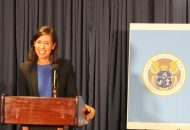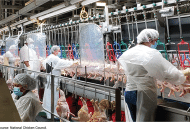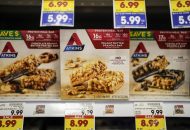Healthy Diet Impossible for Majority of SNAP Holders

The U.S. Department of Agriculture released a recent report which showed that for 88% of Supplemental Nutrition Assistance Program participants there is a barrier to achieving a healthy diet throughout the month.
“It’s vital that the program helps enable participants to achieve a healthy diet amidst the real world challenges they face. The study findings released today indicate that we’re not yet there,” said Stacy Dean, deputy undersecretary for food, nutrition, and consumer services at the USDA.
The SNAP program provides benefits to eligible low-income individuals and families through an Electronic Benefits Transfer card, which can be used like a debit card to purchase food in qualifying retail stores.
The findings from the USDA are presented in two separate reports, a quantitative survey and qualitative in-depth interviews. The results from the nationally representative survey includes 4,522 completed surveys collected between May and November 2018 from SNAP participants in 26 states.
The qualitative report includes findings from in-depth interviews with 121 SNAP participants in 12 states conducted between July and September 2018.
The most common barrier overall, reported by 61% of SNAP participants, was the affordability of foods that are part of a healthy diet.
Other environmental barriers, reported by nearly 20% of participants, were lack of transportation to a grocery store or the distance to a grocery store.
The most common individual or household barrier, reported by 30% of participants, was lack of time to prepare meals from scratch that are part of a healthy diet.
Other issues, reported by 11 to 16% of participants, were limited knowledge about healthy food, physical disability, no storage, lack of equipment, or limited cooking skills.
“For some resource constrained individuals, they are sensitive to purchasing foods that may spoil, and that may make people more inclined to purchase frozen food,” said Brain Lang, director of the Center for Healthy Food Access at the Food Trust.
The Food Trust is a Philadelphia-based non-profit working to improve access to affordable nutritious food. Lang said back in 2010, he used to see people traveling from rural neighborhoods where there were no grocery stores, to the Reading Terminal Market in Philadelphia to purchase healthy foods.
“Grocery retail in low-income communities is the result of policy choices and market forces, and if we want to understand how to develop solutions there has to be consensus about what problems are,” said Lang.
Lang worked with other members of the Food Trust to design a model for fresh food financing, by developing grants and loans for grocery stores to start up food enterprises and invest in low-income communities.
He also helped navigate SNAP participants to programs like Heart Smarts, which provides 5-15 minute cooking lessons and educational materials about healthy food preparation and diet choices.
The Food Trust has established 90 new grocery stores around the state, and Lang said their efforts provided a template for the Obama Administration to implement a federal food finance initiative, food access, and mapping in policy work.
“If you look at what’s driving lack of access to grocery stores, it gets down to are peoples’ SNAP benefits adequate, and does that translate into less grocery stores,” said Lang.
Lang said that the total amount of benefits people receive on SNAP are not sufficient to feed themselves.
This is because, Lang said, studies show that people on SNAP tend to exhaust the benefits by the third week of the month, and after that have to go to food pantries or other emergency food providers to be able to procure food.
The funding formula used for SNAP is known as the Thrifty Food Plan, and there has been advocacy work done in recent years by the organizations like the Research and Action Center, to get the USDA to change the formula for how they provide benefits for the low-cost food program to help participants through the month a little better.
During the pandemic emergency, waivers were granted for things like income reporting thresholds, which typically limit the total SNAP benefit participants can receive, and additional emergency SNAP benefits were given to qualifying households.
However, the U.S. Department of Social Services announced that those emergency SNAP benefits are set to end on Aug. 1.
“Many have to choose whether to pay the electric bill or feed themselves and their families, and that’s a tough choice,” said Lang.

























